I apologise for my supreme lack of updates here – especially food updates. I’ve recently moved halfway round the globe with X and am in the midst of settling down. Our shipment of stuff has yet to arrive, so I have no baking equipment and I’m lacking all my pretty plates, napkins and other food props to take photos of my food with. What I don’t lack is the tremendous amount of beautiful and natural sunlight I’m receiving in the apartment – perfect for taking food photos! If you have been following me on Instagram and/or Facebook, you will see some photos there, some with simple recipes that I may or may not blog properly in the future. So bear with me while I continue to update the blog with these overdue travel posts (I promise to share amazing photos and useful tips of the places that I’ve been to, so stay tuned!)
Another significant event that happened recently, which I’m sure many of you will already know by now, is the passing of one of Singapore’s greatest leaders, Mr. Lee Kuan Yew. I have a lot of respect for him for leading and transforming Singapore so I thought I will not post anything during the period of National Mourning. But ultimately, life goes on, and we will continue to move forward as one nation!
Now, moving on to our Cambodia post (:
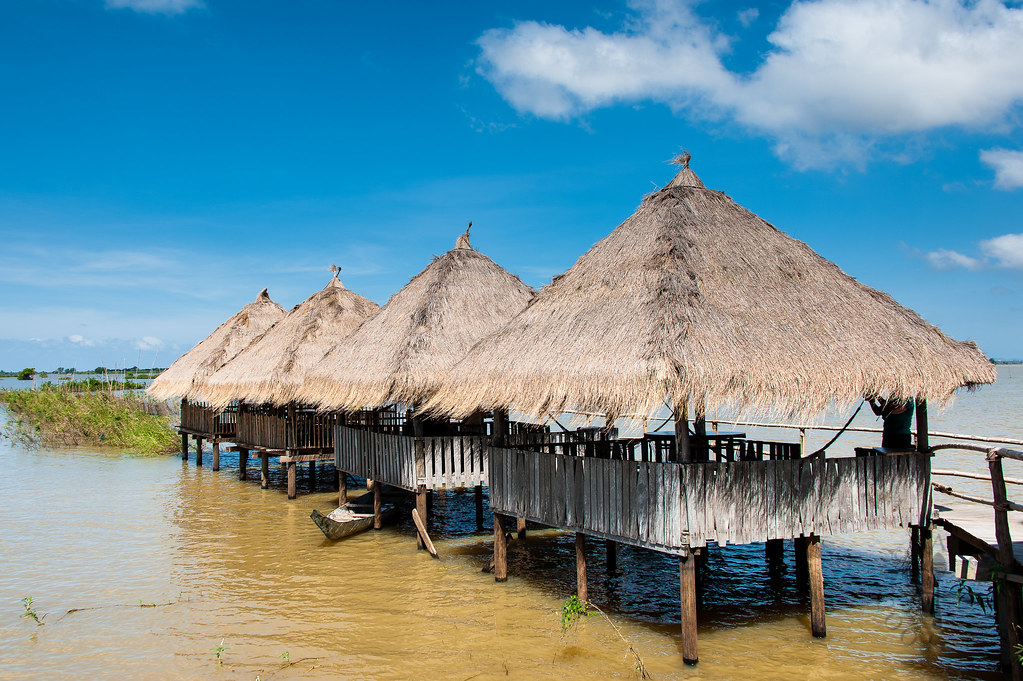
Phnom Penh to Siem Reap
After our 2-night stay in Phnom Penh (read more about it here and here), we head for Siem Reap. There are many ways to travel between Phnom Penh and Siem Reap – by bus, airplanes, taxi, mini-bus etc. By flight was out of the question for us as it’s way cheaper to pay for one more night of lodging than to buy a pair of air tickets. However, if you are facing time constraint or price is not an issue, go ahead and opt for a flight.
We took a bus ride from Mekong Express after a good night’s rest – there is a night bus option but after reading about the high rate of traffic accidents online, we decided not to take that option. The bus ride is around 6 to 7 hours long, including a rest stop for lunch and drinks, but the weather was so scorching hot that we couldn’t wait to get back on the road.
By the time we reached Siem Reap, it was late afternoon, so we rested early to prepare ourselves for one of the most majestic beauties in Asia, the Angkor Archaeological Park.
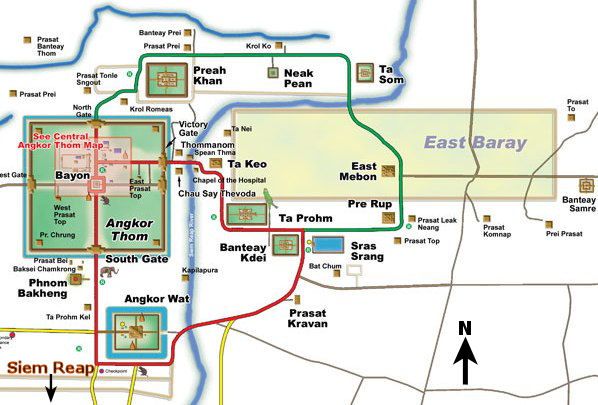
Transport
There were 2 options to travel and visit Angkor Archaeological Park – renting a bicycle near our hotel and cycle there or take a tuk tuk. Without hesitation, I opted for the latter as I know my physical fitness limits (haha) and I have to say it was a good decision because, even though we visited Cambodia in November and thought the weather would have been cooler, I was terribly wrong. The weather was scorching hot and the cycling wouldn’t do much to cool us down. In addition, on the first day of our visit, it started pouring like crazy just in the afternoon – definitely not a good idea to be drenched and still have to cycle our way back to the hotel. Our hotel has arranged a tuk tuk driver for us and he drove us to the entrance of Angkor Archaeological Park.
Angkor Pass
The tickets to enter the Angkor Archaeological Park is known as the Angkor Pass. There are 3 different types of Angkor Pass – 1-day (US$20), 3-day (US$40) or 7-day (US$60). The 7-day ticket is of the best value but unless you are a historian or extremely interested in the temples/ruins, it won’t be the option for you.
We took a map of the Angkor Archaeological Park from the hotel and noted there are 2 routes (see above picture) – one longer route visiting the smaller temples (the green route) and one shorter one visiting the main and more popular temples in the park (the red route). Each route will take about 3/4 to 1 day to complete (if you alight at every temple to visit and take photos), so the 3-day pass was our choice – and we can see the sunrise the next morning.
We had our photographs ID taken at the counter. Your photo will be printed on the ticket itself. It’s best to go as early as possible (we went about 9 to 10am) so that you beat the crowd and especially the heat. Keep the tickets with you at all times as at major temples and sites, there are guards stationed there to check your ticket.
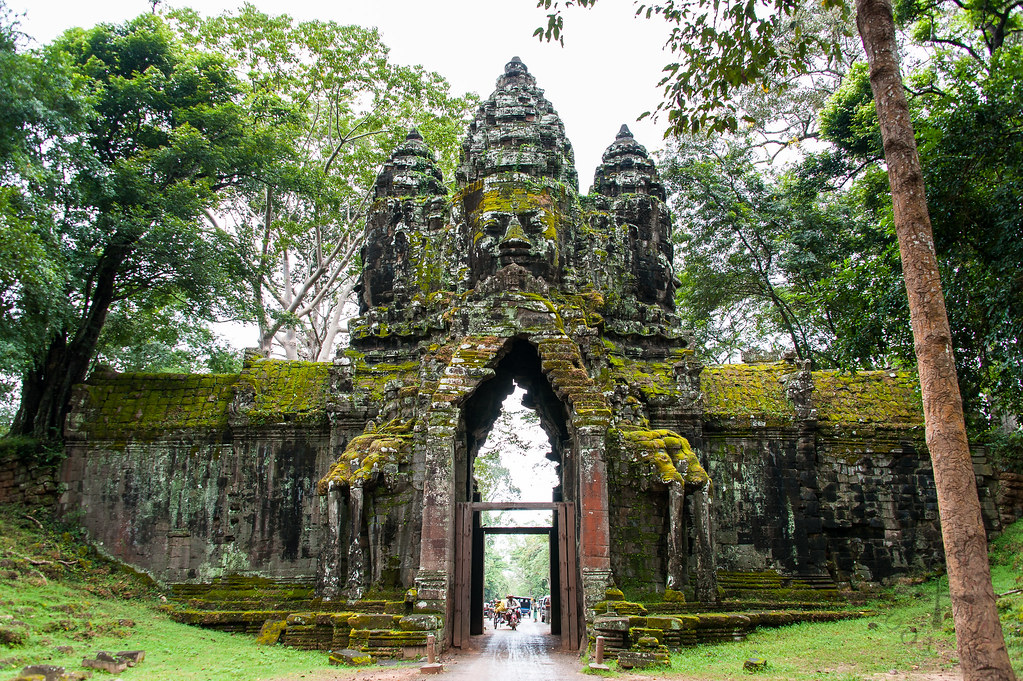
We took the green route on our first day as we wanted to visit the main temples as early as possible to beat the crowd, so the best way is to visit them immediately after watching the sunrise, which will be the next day (and in the next post).
Guide
Is a guide necessary? Well I will say you will need a guide so that you know what temples you are looking at and the importance / significance of each temple. That’s why I used Google and downloaded several guides onto my phone so that I can read them along the way while X snaps his pictures. 😉 There are tons of information on the net, and one that I really liked is from The Angkor Guide, which is a translation of Maurice Glaize’s 1944 guide. I’ve taken some excerpts from the guide for this post (less words, more photos!)
Angkor Thom
Angkor Thom was the last and most enduring capital city of Khmer empire, established in the late 12th century of King Jayavarman VII.
The walls of Angkor Thom form a square of 3 km each side, enclosing an area of 900 hectares… Eternally they are surrounded by a hundred metre wide moat, which is crossed at each of the city gates by a causeway.
— The Angkor Guide, Page 81
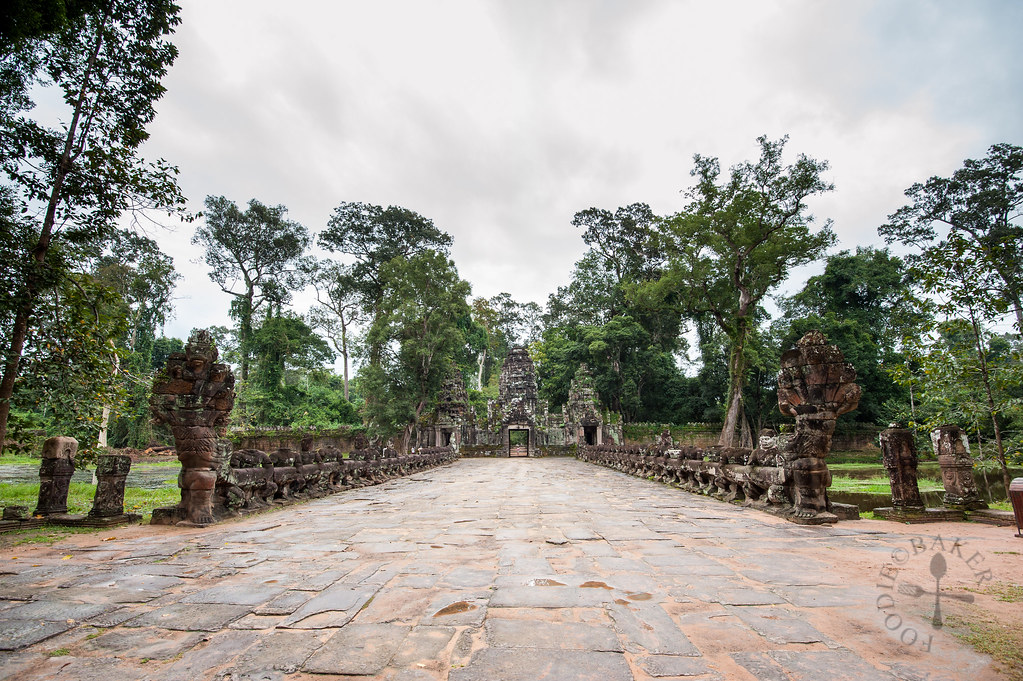
This double railing in the form of a naga was perhaps “one way of symbolising a rainbow which is the expression of the union of man with the world of the gods, materialised here on earth by the royal city”
— The Angkor Guide, Page 82
 | 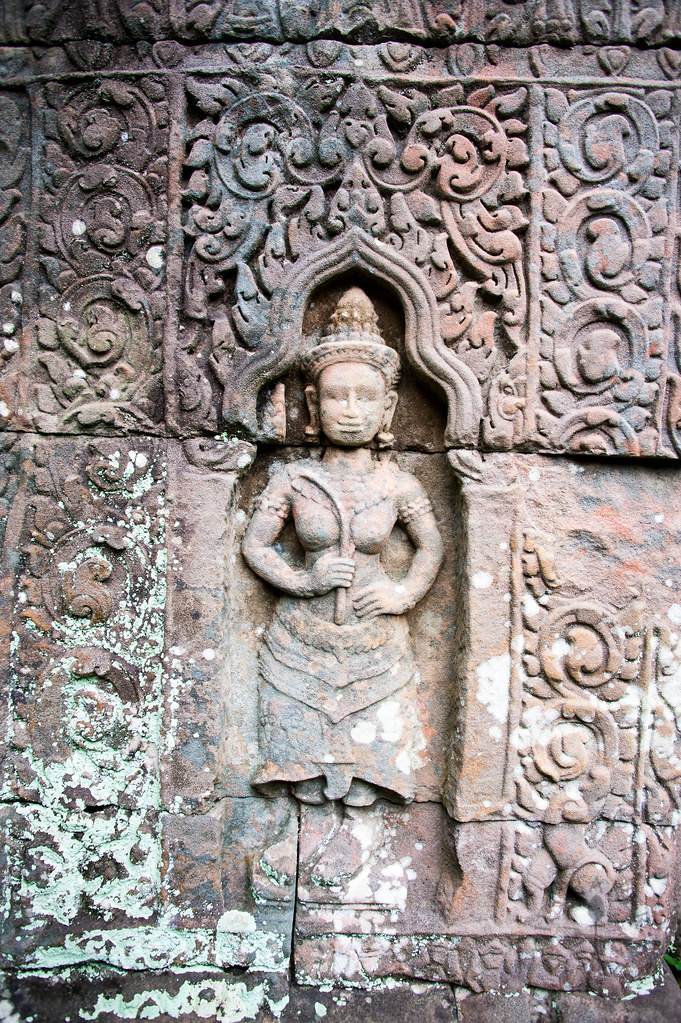 |
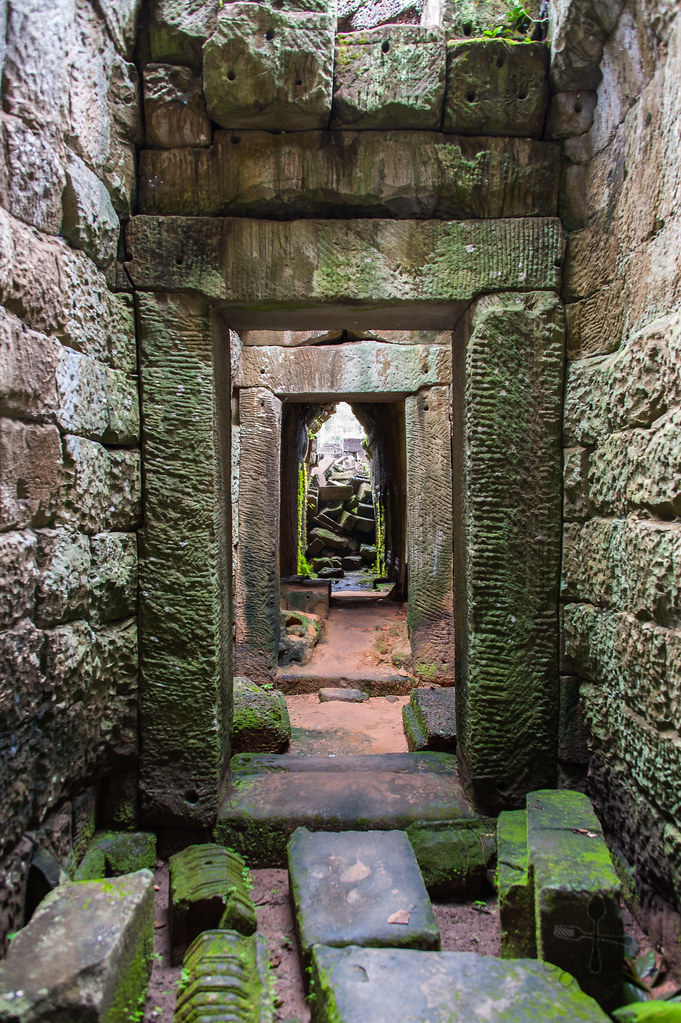 | 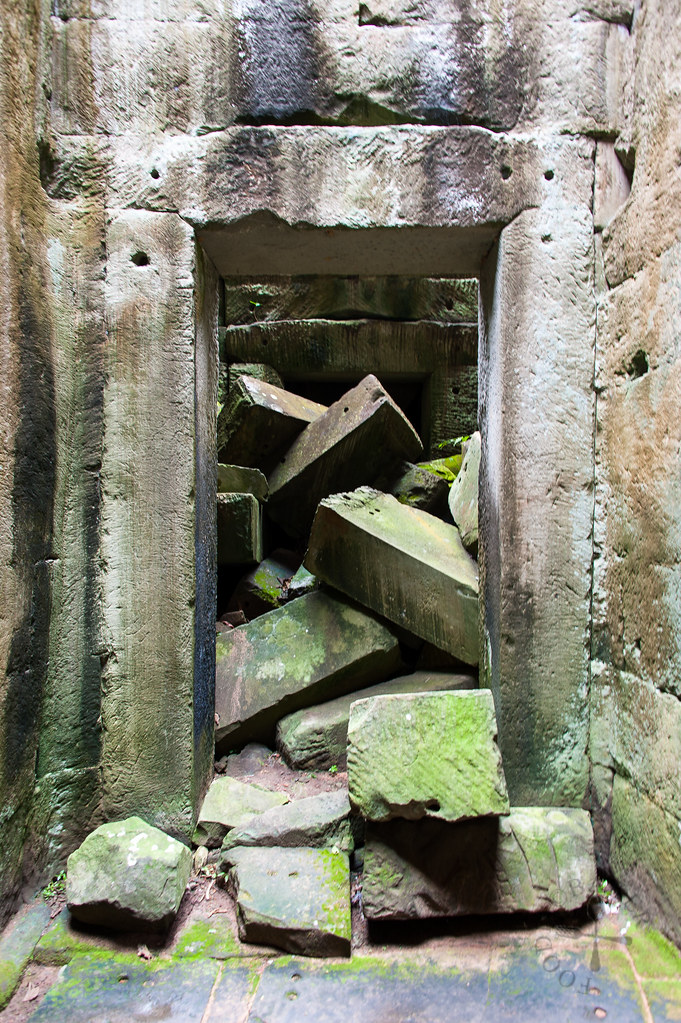 |
Jayavarman VII, who was crowned king in 1181 at the age of about 55… raised Cambodia from its ruins and reconstructed its capital Angkor Thom… built or restored to completion the monuments of Prah Kahn, Ta Prohm and Banteay Kdei… and furnished the country with numerous hospitals. Such effort, coming after so many bloody battles, could not but drain the facilities and energy of the nation – so that from the beginning of the 13th century, after the death of this last great king, the Khmer people fell to inertia… resulted in the 15th century abandonment of Angkor…
— The Angkor Guide, Page 10/11
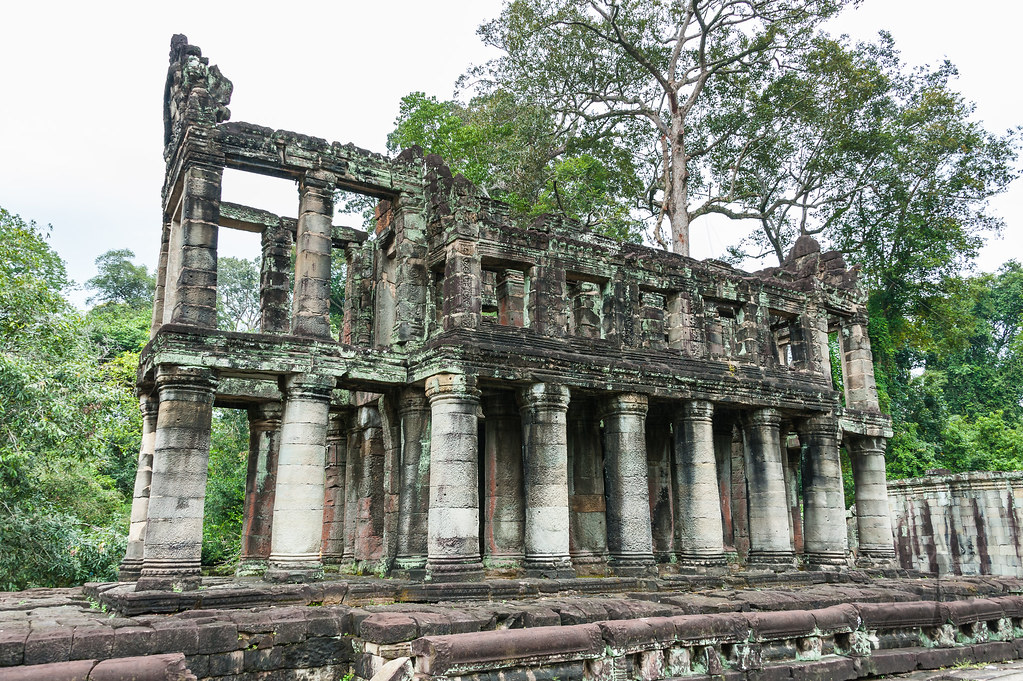
Preah Khan
Preah Khan is built in the 12th century by King Jayavarman VII and was the centre of a substantial organisation, with almost 100,000 officials and servants.
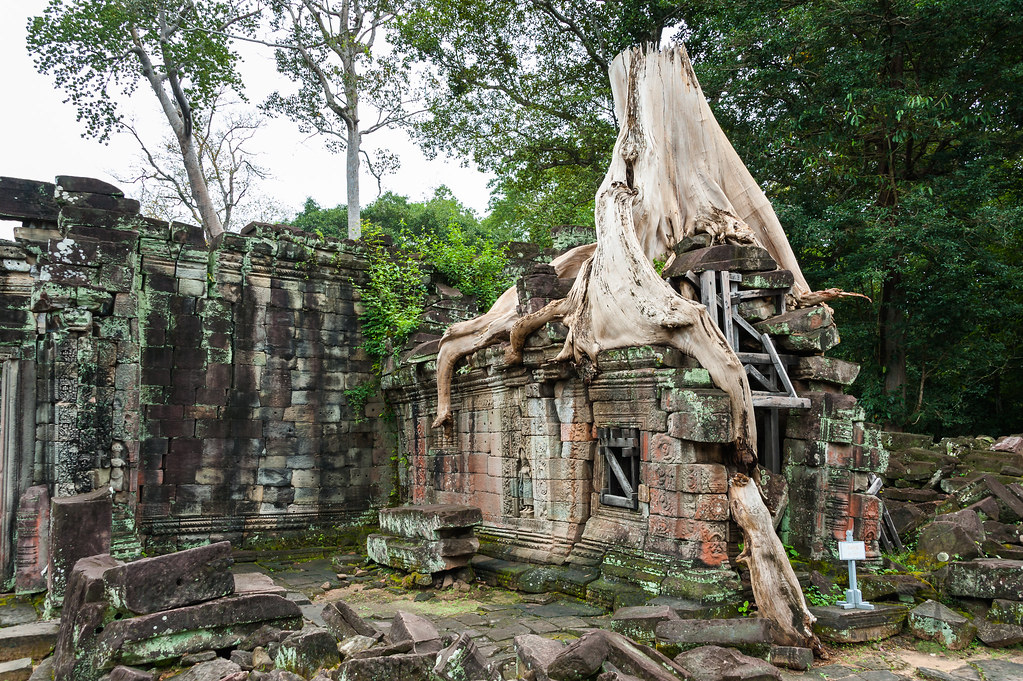
The large ensemble of Prah Khan, forming a rectangle of 700 metres by 800 [metres], surrounded by moats, covers an area of 56 hectares. It is… an example typical of the formula adopted by Jayavarman VII; – all the elements of a vast composition compressed in a relatively small space.
— The Angkor Guide, Page 173
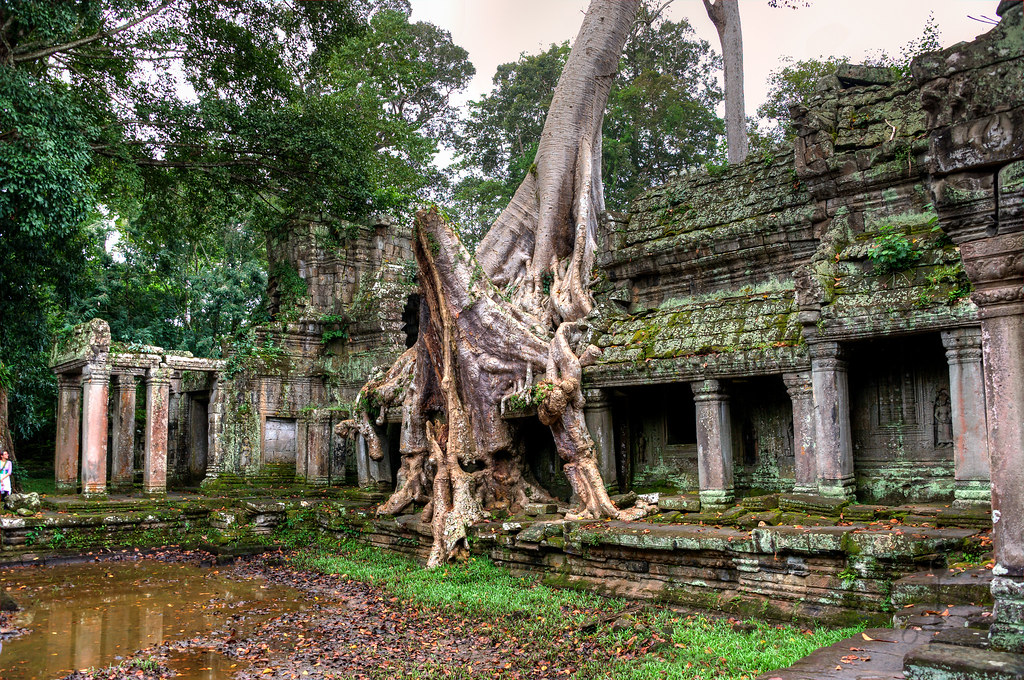
The temple was previously overrun with a particularly voracious vegetation and quite ruined, presenting only chaos. Clearing works were undertaken with a constant respect for the large trees whih give the composition a pleasing presentation without constituting any immediate danger.
— The Angkor Guide, Page 175
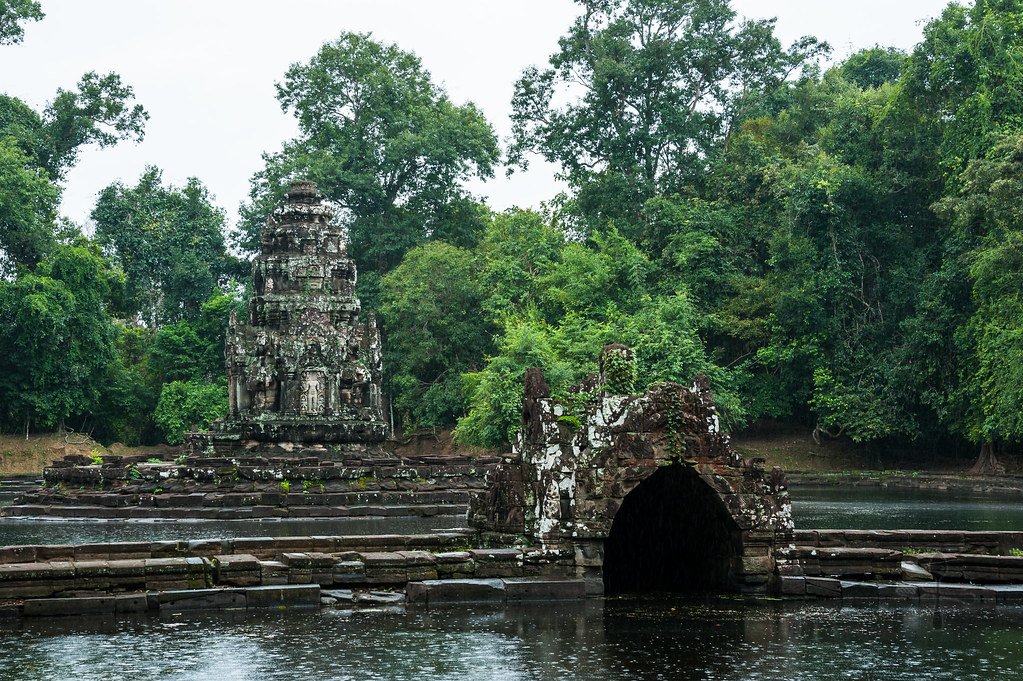
Neak Poan
Neak Poan (aka Neak Pean) is an artificial island with a Buddhist temple on a circular island built during the reign of King Jayavarman VII.
The pool shines, illuminated by the light of the golden prasat and coloured red with lotus blossom, evoking an image f the pool of blood spilled by the Bhargava: inside is an eminent island, charmed by the pools which surround it, cleansing from the stain of sin all those who come into its contact…
— The Angkor Guide, Page 167
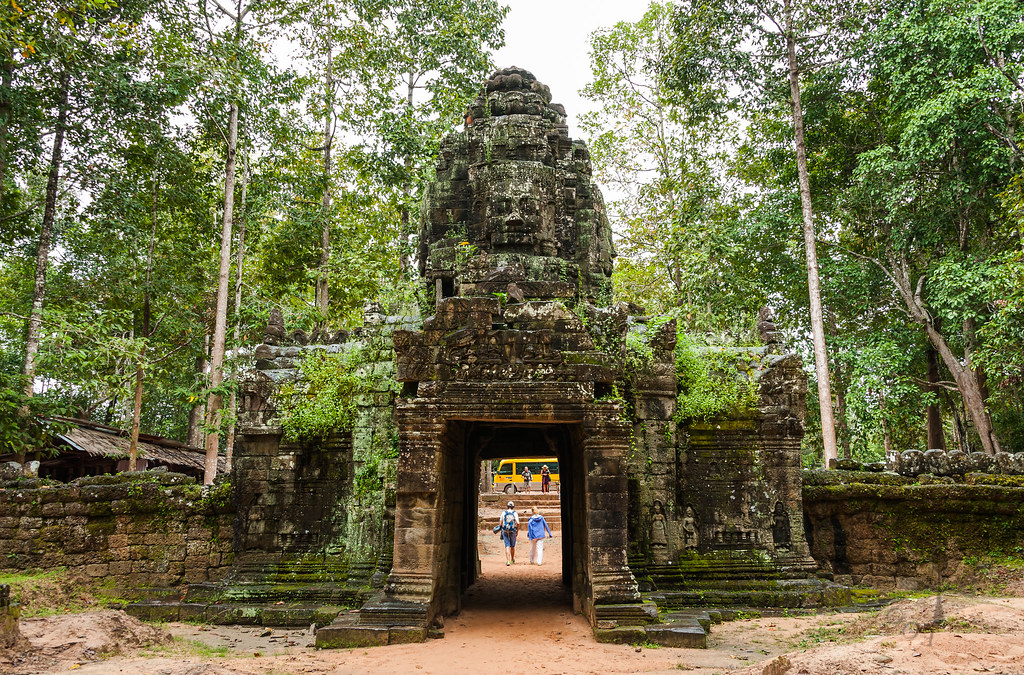
Ta Som
Ta Som is a small temple built at the end of the 12th century by King Jayavarman VII.
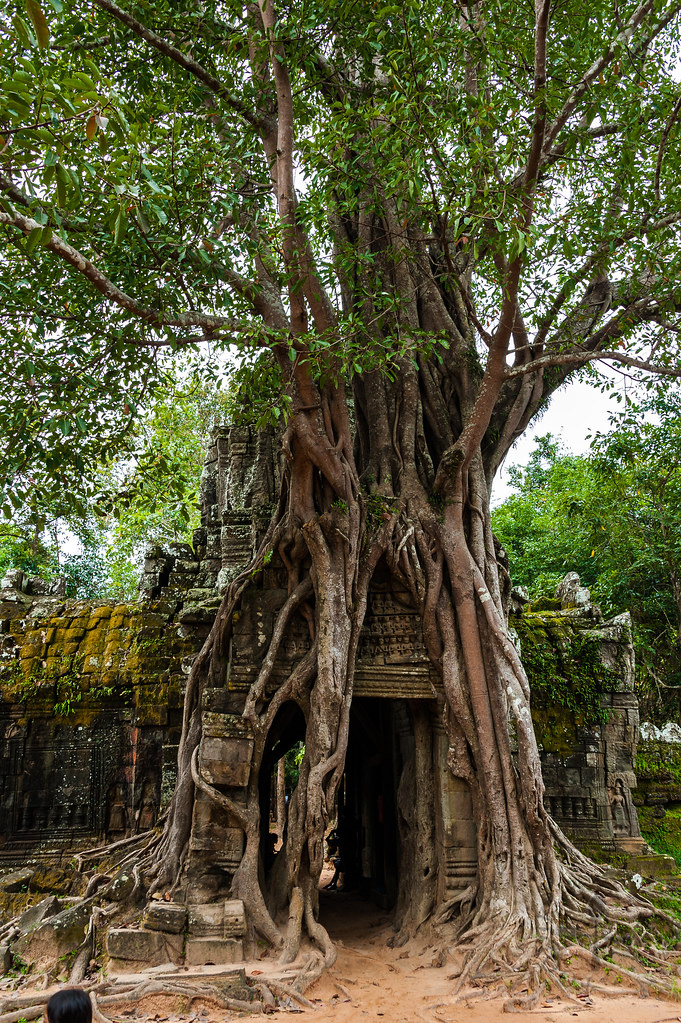
Ta Som appears… as a tower with four faces of Lokesvara entwined within the roots of a giant Ficus tree that crowns it perfectly. Several of the roots have pierced the vault and descent straight to the ground, obstructing part of the passageway.
— The Angkor Guide, Page 164
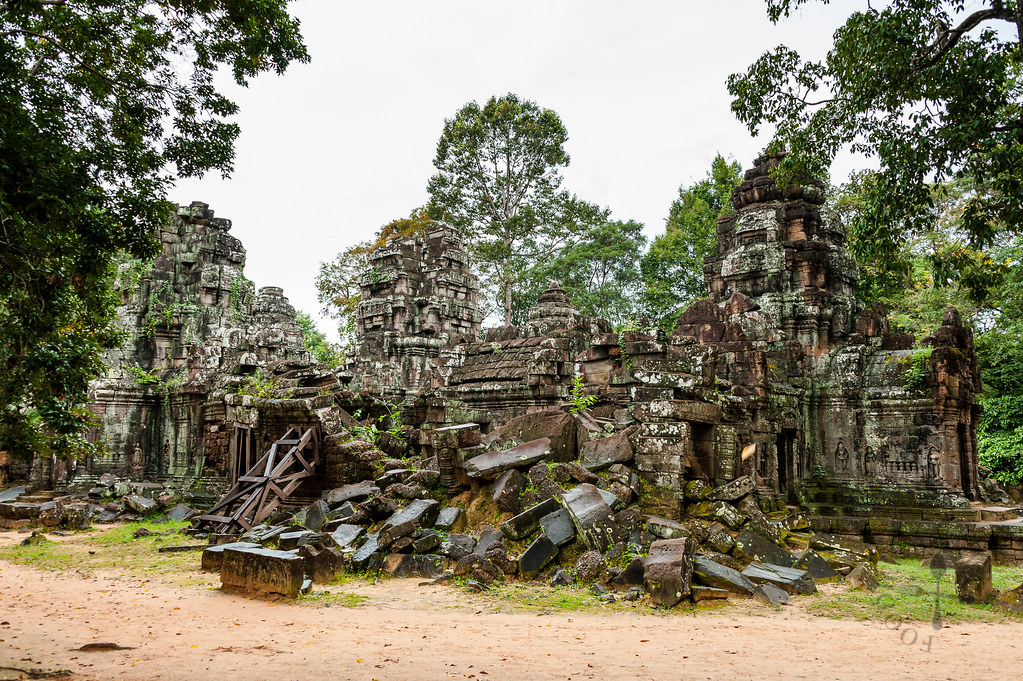
In an advanced state of ruin, the various buildings which still stand have been the object ff some provisional consolidation and basic clearing work. The internal courtyard remains littered with fallen blocks and the ensemble is, in its verdant setting, quite charming.
— The Angkor Guide, Page 164
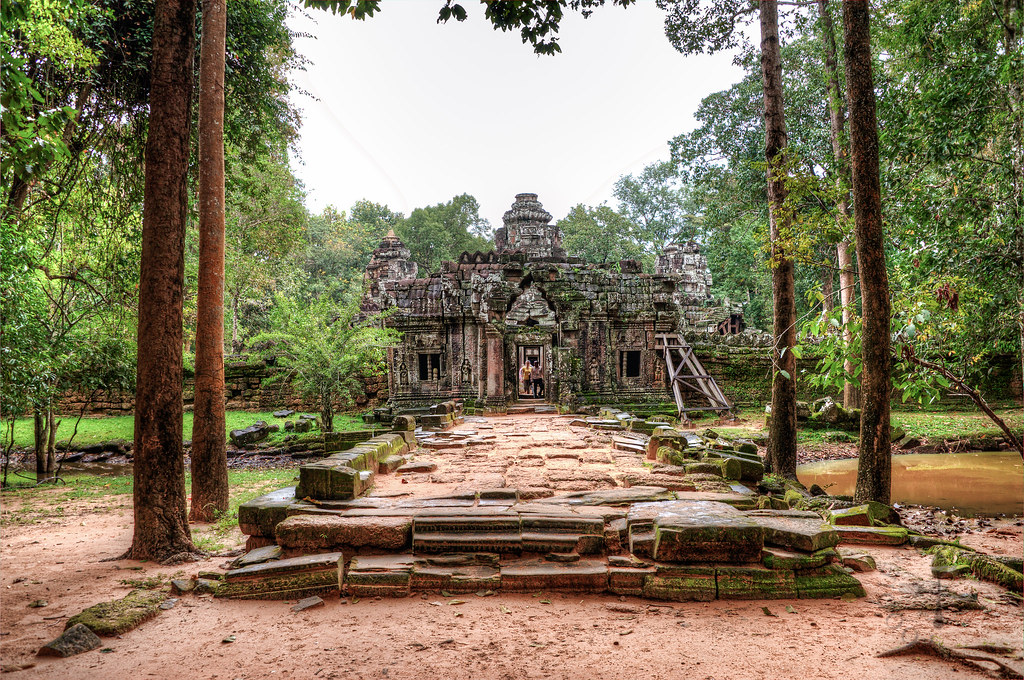
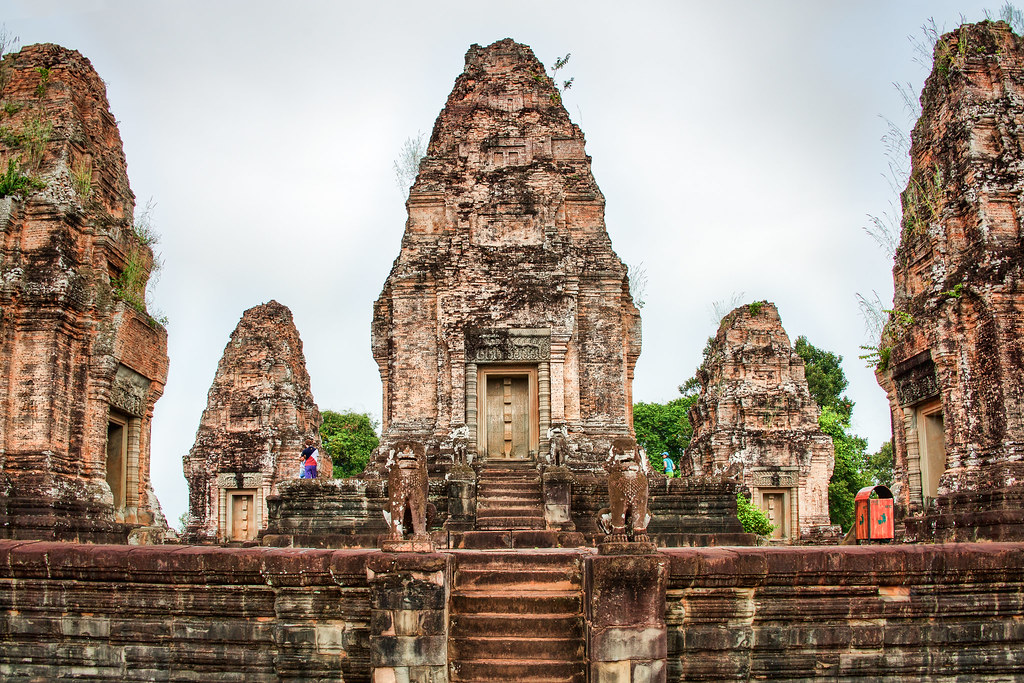
East Mebon
East Mebon is a 10th century temple built during the reign of King Rajendravarman, dedicated to the Hindu god Shiava and honors the parents of the King.
Measuring 2 kilometres north-south by 7 kilometres east-west, it is enclosed by an earth embankment and marked at each of its four corners with a steel set in a shelter.
— The Angkor Guide, Page 161
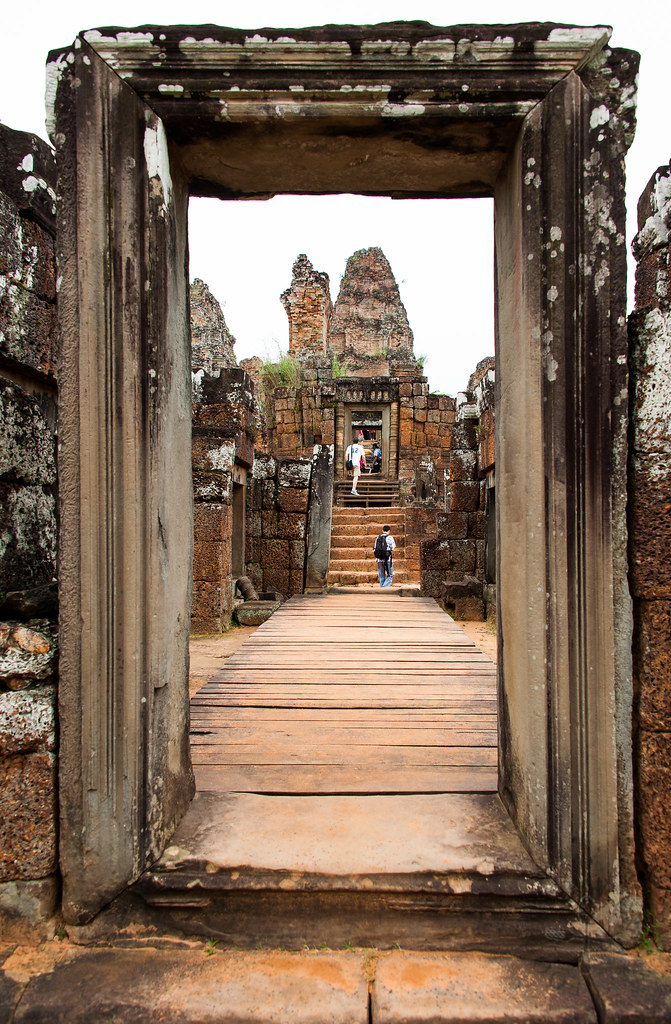
The Mebon belongs therefore to the series of temples consecrated to the memory of deified parents…
— The Angkor Guide, Page 161
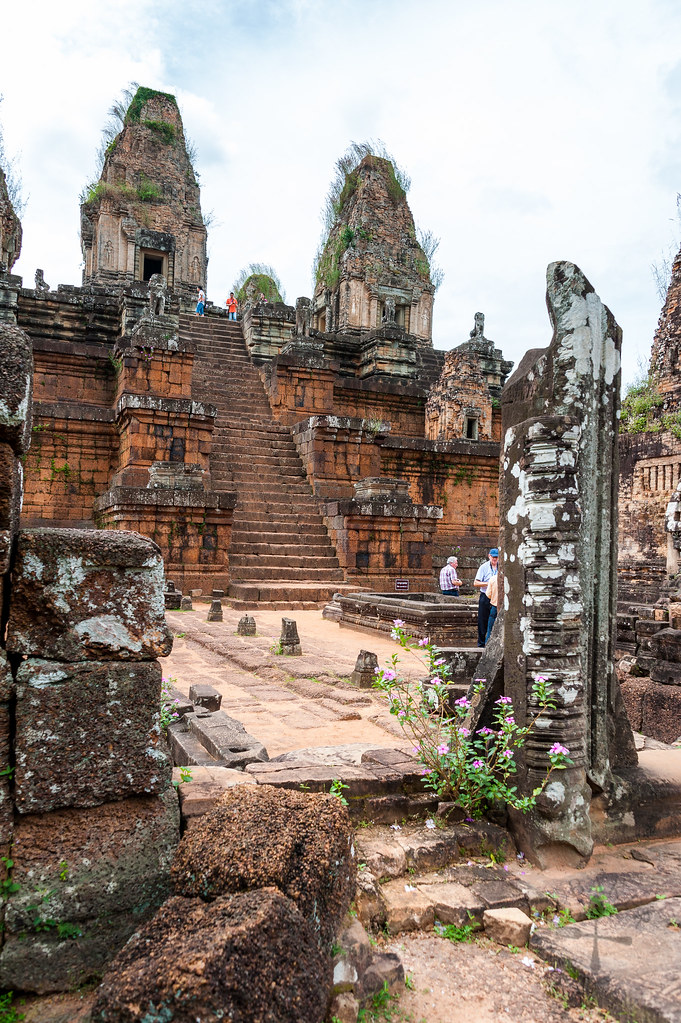
Pre Rup
Pre Rup is built as the state temple of King Rajendravarman in the 10th century.
Am impressive work of impeccable proportions, constructed almost entirely of warm coloured materials (laterite and brick) at a time when sandstone was only used sparingly, Pre Rup needs to be visited either early in the morning or at sunset.
The name Pre Rup (“to turn the body”) recalls one of the cremation rites, where the silhouette of the corpse in its bed of cinders is successively turned to different orientations. A large tank at the base of the east stair to the pyramid is considered by some to have been used in such ceremonies.
— The Angkor Guide, Page 155/157
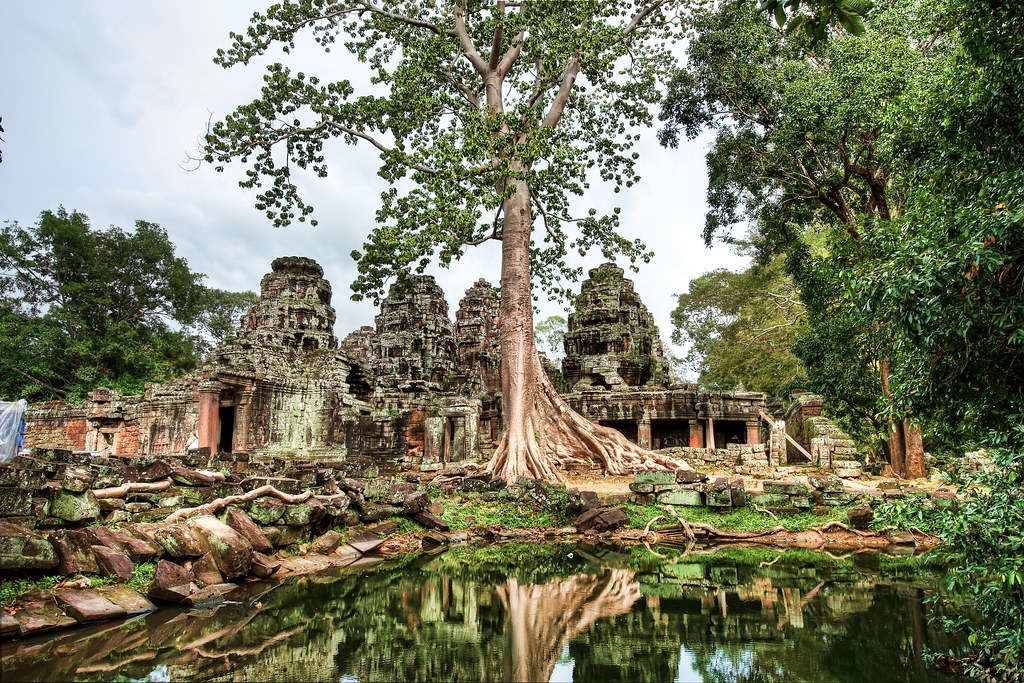
Banteay Kdei
Banteay Kdei, meaning ” A Citadel of Chambers”, also known as “Citadel of Monks’ Cells”, is a Buddhist temple built during the reign of Jayavarman VII.
Here one finds another example of the spirit of confusion… that is characteristic of the monuments built, transformed or completed by Jayavarman VII – and of the crowding of the sacred enclosure, which here is 63 metres by 50 [metres], set within a vast enclosure (700 metres by 500 [metres]).
— The Angkor Guide, Page 149

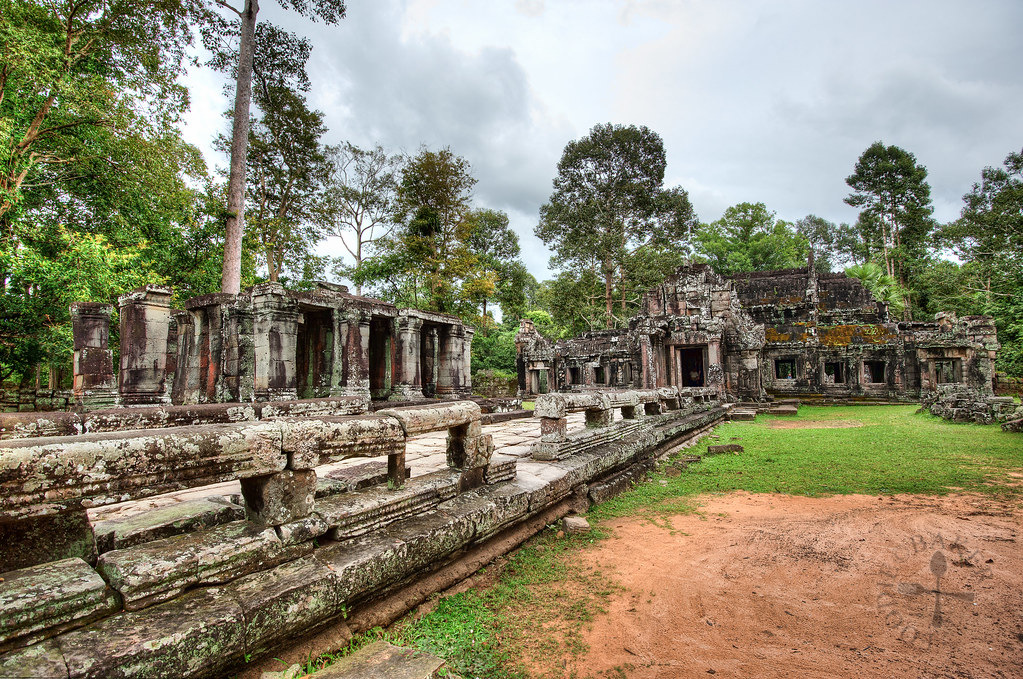
The traverse of this temple can be made from end to end, by sending your vehicle to meet you at the gate opposite to your entry.
— The Angkor Guide, Page 149
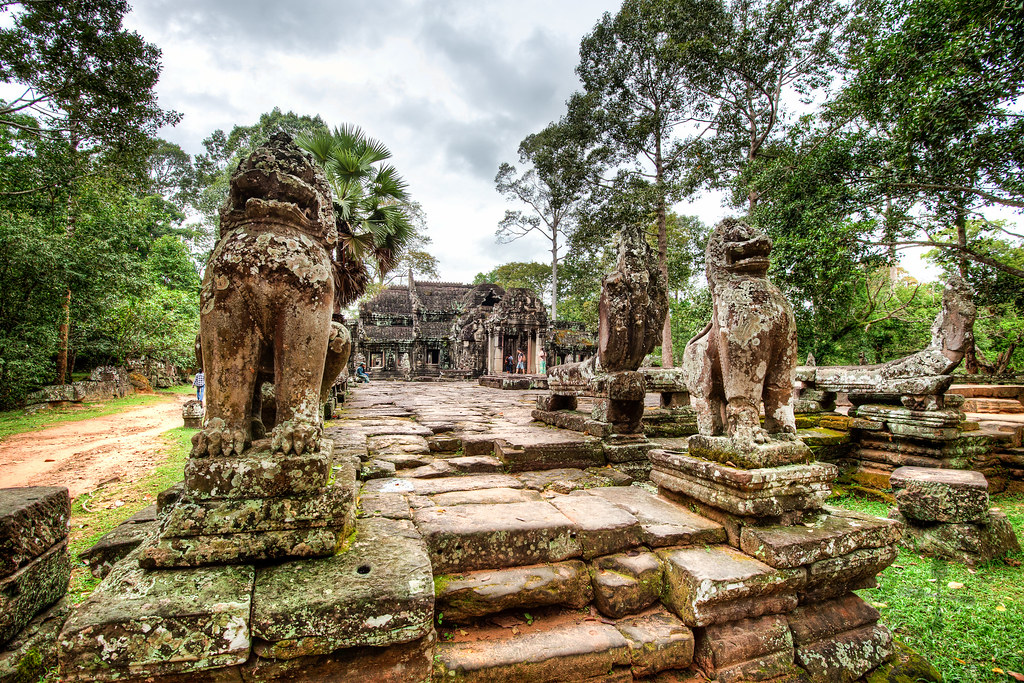
Food & Drinks
As for our lunch, our tuk tuk driver originally brought us to a restaurant (which we entered and walked out without ordering anything because it’s ridiculously expensive!) We in the end had lunch somewhere between Banteay Kdei and Pre Rup, where the locals set up small stalls of along the way. They serve stir-fried rice / noodles, noodle soups and drinks which are a lot cheaper than dining in restaurants.
And this marks the end of our first day at the Angkor Archaeological Park! If all these still do not entice you to visit Cambodia, I’m sure the next post will 😉 Stay tuned!
To see our itinerary for the whole trip and our budget, click here!
Bam's Kitchen says
Isn’t it amazing how nature prevails and the trees grow around buildings and temples. Great photos and look at the blue sky! I have not seen blue sky since I came to visit you in Singapore. I am not kidding. I know it always takes a while to get sorted in your new place so take your time and looking forward to seeing some new local favorites from your new home. Take Care,BAM
Jasline N. says
The skies here are an amazing blue, how I wish you can see it Bobbi! The photos of Angkor on the second day are even more phenomenal, it’s truly man vs. nature. Sending plenty of hugs over, take care!
bentodays says
Lovely photos! Glad you are settling down well!
GiGi Eats Celebrities says
OMFG CAMBODIA IS HAPPENING sooner rather than LATER for me! PHENOMENAL photos!
Jasline N. says
Hi GiGi, ooh hope you visit Cambodia soon! 🙂